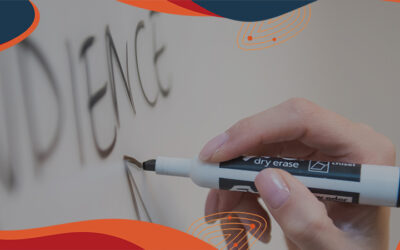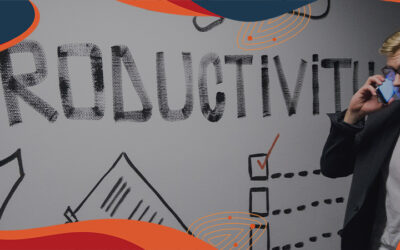TRANSCRIPTION OF EPISODE
Chris Battis: On this episode of Intent Topics, we’re going to talk about chatbots versus live chat.
Chris Battis: I’m Chris Battis, and this is Logan Kelly, and today we’ll be talking about the purpose of bot versus live chat, how they differ, and when to use each. You’ll learn how to pick which is best for your business and how to implement them.
Chris Battis: All right, Logan, talk to me about chat verse bot. What are your opinions there?
Logan Kelly: Cool. Well, let’s take a step back. So, live chat and chatbots both kind of came about, because, you know, the technology was out, and really they’re seen as this better way to gather information from a website visitor. So, you know, I think a lot of the work around chat had been done in the kind of customer support area, right? The big company is trying to figure out how they could lighten up the load on their phone lines.
Logan Kelly: So, what came about was, you know, all this technology that allowed us to have that chat widget on the website around bots, and then live chat. So, I think the real big difference is, you know, obviously, with a bot, you know, it’s this pre-programmed thing, which has its ups and downs. Then with live chat, it’s just a real person, which can have its ups and downs as well. So, you know, depending on the business case, you know, live chat and chatbot, you know, one can be the right or the wrong one.
Chris Battis: Right, right, right.
Logan Kelly: You know?
Chris Battis: So, let’s rewind. Let’s see, it was at least two years ago, you and I we’re doing together, and it was just the bot craze, right? It was like, “Must have bot, bots are cool, you need it for your business. They’re available to the mere mortal, you know, marketer or sales rep. Go.” Right?
Logan Kelly: Yeah.
Chris Battis: So then-
Logan Kelly: Yeah. Yeah.
Chris Battis: All this … I remember myself, personally, seeing them like, “Yeah, I [inaudible 00:02:15] the bot, it’s going to be awesome.” I was looking to use it internally at HubSpot, right, to help manage the delivery of professional services, the migrations and stuff.
Logan Kelly: Right.
Chris Battis: You would sit down and write this thing, and it was just gargantuan, in the flowchart, in the whiteboarding, to figure it all out. Because you had to have every path covered, right?
Logan Kelly: Right, right, yeah.
Chris Battis: It was kind of like, hm, seems like a conversation would be easier, because so many of the threads ended with, “Have a conversation.” I was like, “If I have to put everyone through that, I’m never going to get anyone to a conversation,” right? So, that’s a lot of how … At least I got to the point of, “Why don’t we focus on conversations, rather than replicating with bots?” Right? Is that kind of similar to [inaudible 00:02:55]
Logan Kelly: Absolutely. So, I went to the point where I built some … I was actually doing Facebook Messenger Ads, right? So, I had some pretty sweet bots that were having some pretty decent conversations that, you know, then would suddenly stall out, and then I would try to follow up, you know, on the email or the phone number, whatever I had gathered with the bot.
Logan Kelly: I think one of the problems with bots is that they’re just used as a different way of capturing the data that you would get from a form. I think that’s a big problem, because when we look at what’s the conversion rate off of form, you know, submissions, it’s not that different than what’s on … you know, it’s what’s on the … sorry. The form submission response rate and the response rate on the chat … or the bot conversations, is not-
Chris Battis: Were no different, right?
Logan Kelly: Yeah, exactly.
Chris Battis: Yeah, yeah.
Logan Kelly: So, with live chat, what I’ve seen, is it’s really starting that sales conversation, and from there, our conversion rates are through the roof. So, a real person is looking to have a conversation with another real person, and then from there, we transition to the sales team. As opposed to just another self-service, you know, you might as well just download an eBook or something, and you’re never going to hear from that person again. I think that’s very similar to the stories that we’re hearing with the chatbot world.
Chris Battis: Yeah. I’ll back that up with a study that was done internally at HubSpot. They took a rather long form, right, a form with many fields, and the rebuilt it with a bot asking the same questions, and there’s literally no difference. If anything, the bot may have produced a little … at a lower rate, right?
Logan Kelly: Yeah.
Chris Battis: Which is funny, right? I was like, “Oh, really?” Everyone just wanted to believe that the bot was better, right? So I think you make a really good point, that if a bot’s replacing a form, it’s pointless, right? If anything, maybe your form should be shorter, and you should be a little more well-thought out about forms … gathering more information over time, right?
Chris Battis: So I love the idea of talking to a human, right? Because there’s usually actually a question, right? I don’t want to fill out a field, just to fill out a field. But say you’re calling into a manufacturer of a product, and you want to know quantity or availability, and the answer’s yes or no, and that helps you be like, “Oh, we can keep talking or not,” right?
Logan Kelly: Right, yeah.
Chris Battis: Rather than just basically form fields, right?
Logan Kelly: Yeah, exactly. I think when we look at what sales is, it is people trying to impact the probability of getting to a sale, right? So you’re looking to reduce the probability of getting a no in the sales process. I think with live chat, that’s really your first line of defense, or your first line of attack, however you want to look at it, to really starting to shape the perception that that visitor, which turns into a prospect, has of your business.
Logan Kelly: So, if you can answer that, like preempt some of the questions that are going to happen later on in the sales process right there in the live chat, and really edify your sales people, and kind of get that sales process started off on the right foot. You know, a form doesn’t do that, and a bot doesn’t do that. You know, a bot … All of the attempts at making a bot sound conversational, it just … they just look stupid-
Chris Battis: Right, right.
Logan Kelly: In my opinion. So, that’s really where live chat, you get a little bit more smooth, you get a little bit better of a transition between the sales person and sort of the information capture. I think that’s really where, you know, bots fall on their face.
Chris Battis: Yeah. I also … Well, I think it’s worth pointing out that, it’s not to be confused with serving up a conversation-provoking question on a specific URL, right? For example, Databox. They do a great job on their partner page, they’re like, “Hey, interested in becoming …” It’s specific to that page, right? It’s all questions about becoming a partner, or finding a partner, right?
Chris Battis: I think that is a very good use of a conversation, but it’s not to be confused with appearing that it’s a bot, right? It’s actually just asking a specific question specific to the URL.
Logan Kelly: Yeah. So I think chat triggers are wonderful, because what they really allow … if I’m a person, I have no context of why this person has visited my page. Say I’m the chat operator, right? I’ve put that hat on once in a while. So I’m a chat operator, there’s a visitor coming to the site, I can see where … you know, what pages they’re viewing, I can see that maybe what location they’re from. Then all of a sudden this question gets asked, and that preempts the conversation.
Chris Battis: Mm-hmm (affirmative). Yeah.
Logan Kelly: As the chat operator, I’m going to be able to provide that information much better.
Chris Battis: Yeah, it’s a lot less of the, “Hey, random person, what brings you by?” It’s more like, “All right, well you came this way, you’re on this page, we know at least this little amount of information why you’re here, let’s speak to that, let’s get you going talking about that.”
Logan Kelly: Exactly, exactly. Yeah. I think that that just gives the … You know, the chat trigger is like you’re taking control of the conversation, but you’re still allowing feedback from that visitor to really, you know, bring the conversation to where they need it to go to feel comfortable with taking the next steps in the sales process. That is totally different than a form.
Logan Kelly: Think about how many minutes or hours we spend trying to write the right headline on a landing page. You know, why don’t we just open that up and say … you know, why don’t they come to the page, we’ll give them some information, and then, you know, a nice little chat trigger, start a conversation, it goes where the prospect needs it to go with some guidance from us, and now we’re in a sales conversation. I think that’s a much better use of our time.
Chris Battis: Yeah. So, Logan, do you have a preferred chat tool or software that you prefer to use?
Logan Kelly: Yeah. So, LiveChat, it’s what we use here at Union. LiveChat is fantastic, it integrates with a lot of different softwares, including, you know, HubSpot. The other thing they’ve done, is they’ve worked a lot on the channels. So, you know, you can do WhatsApp, you can do Messenger, you know, Facebook Messenger. So, really powerful stuff, and very easy to scale, and pretty cost-effective.
Logan Kelly: So, you know, it allows us to really control what is being seen on the page, as far as chat goes, and it’s different from page to page to page to page. I think that’s really, really, powerful, and it’s … I kind of assumed it would be like that on more chat tools, but LiveChat is kind of the best of all the worlds.
Chris Battis: So, you know, we’re a relatively newish podcast, right? So I think it’s worth giving some background on how you got involved here. So, do you want to talk about your experience building out teams that manage chat for clients across, you know, multiple businesses with one team … or a few teams, rather?
Logan Kelly: Yeah. So, what I believe is that, you know, LiveChat is just this wonderful tool for businesses of all sizes. What I saw was the opportunity for, really, if a website visitor’s going to a small business’ or medium sized business’ website, there’s probably a good reason, and it’s much more personal than, you know, going to Geicko.com or something.
Logan Kelly: So, what we were able to do with LiveChat, is with quite a few companies, is really build these chat frameworks so that we could have these sales conversations that felt very personalized, felt very customized, got the information that they needed to get across, without teaching every single one of my reps a new, you know, a new company for six weeks.
Logan Kelly: So, it was very effective. I mean, within about a week we could onboard a company, and generate leads not long after that.
Chris Battis: Yeah, yeah. Another thing I loved that you were telling me about, which I love to do for all our clients, is you take all those frequently asked questions, and you turn that into a knowledge base, right?
Logan Kelly: Yeah, yeah.
Chris Battis: Because your chat operators need to know how to answer the questions accurately, but why not surface all the questions in a knowledge base that you can then use as links to … and content for people that you’re engaged with, right? I think that’s a great idea.
Logan Kelly: Absolutely, absolutely. I think that the knowledge base was the key to allowing us to scale this, and it’s been so effective, because, you know, when somebody gets stumped, because it happens, it happens to even sales people who have been selling the same product for 20 years. They get stumped, we triage in the moment, and then it goes into the knowledge base with, you know, some content that could be used in future conversations, and I think that allows us to continuously learn.
Logan Kelly: So it’s better … you know, it’s easier to teach a human, than it is to teach an algorithm for most of us mere mortal, you know, non, you know, MIT graduates.
Chris Battis: Right. Like ourselves, yeah.
Logan Kelly: Yes, yes.
Chris Battis: Cool. So, thinking about a business trying to decide, you know, bot versus chat, and how to implement. What’s your advice to give there?
Logan Kelly: Yeah, so I think I’m always going to say go live chat if you can. I’ll have a blog article coming out over the next couple of days, maybe a week, which will be available at unionresolute.com. In the meantime, go ahead and hit me up on LinkedIn, tell me a little bit about your business, and I can let you know if what I have to offer isn’t going to be the right solution, I can certainly point you in the right space. I just want to see people be successful, and I want to see, you know, website visit … you know, website experiences be as good as they possibly can be. So, just hit me up on LinkedIn.
Chris Battis: Good meaning highly-converting, right?
Logan Kelly: Highly-converting, yes, and pleasant for, you know, the visitor to move into the sales process.
Chris Battis: Awesome. Cool. All right, Logan, well this wraps up today’s episode of Intent Topics. I’m Chris Battis.
Logan Kelly: I’m Logan Kelly. Thank you everybody for stopping by. Please give us a five star rating whenever you listen to your podcast.
Chris Battis: Cool. Thanks for joining. Take care.



